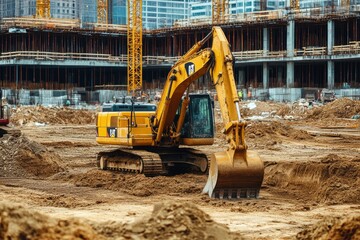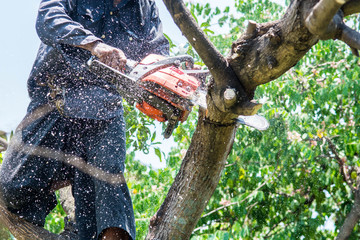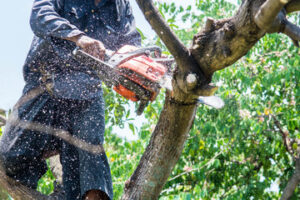Excavating contractors delivering expert groundwork play a crucial role in the construction and development industry. Their work sets the foundation for various projects, ranging from residential and commercial buildings to infrastructure and landscaping.
Excavation involves more than just digging; it requires precision, expertise, and a deep understanding of soil composition, drainage, and structural integrity. Experienced excavating contractors are trained to handle complex machinery and apply strategic methods to ensure that the groundwork is stable and ready for the next phase of construction. Visit bartexcavationllc.com to learn more.
Their expertise helps prevent issues such as foundation shifting, water drainage problems, and soil instability, which can compromise the safety and longevity of a project.
The process of excavation starts with a thorough site evaluation. Excavating contractors assess the condition of the land, considering factors such as soil type, moisture levels, and existing structures. This initial assessment helps them determine the best approach to excavation and the type of equipment required. Proper planning is essential to minimize disruptions and avoid unexpected challenges during the excavation process. Excavating contractors also ensure that the site complies with local regulations and safety standards, obtaining necessary permits and conducting inspections before starting work. Their knowledge of zoning laws and environmental guidelines ensures that the excavation process is legally compliant and environmentally responsible.
Excavation requires specialized equipment and machinery designed for different types of terrain and soil conditions. Excavating contractors are skilled in operating heavy equipment such as backhoes, bulldozers, and excavators. These machines allow them to dig trenches, remove debris, and create stable foundations efficiently. Excavating contractors also use laser-guided technology and GPS systems to achieve precise grading and leveling. This level of accuracy is essential for ensuring that the foundation is even and capable of supporting the weight and structure of the building or infrastructure being constructed. In addition to excavation, contractors are often responsible for site preparation, which includes clearing vegetation, removing rocks and debris, and stabilizing the soil.
One of the key responsibilities of excavating contractors is trenching. Trenching is necessary for installing underground utilities such as water pipes, gas lines, and electrical cables. Excavating contractors follow strict safety protocols when performing trenching work to prevent cave-ins and other hazards. They use trench boxes, shoring, and sloping techniques to reinforce the walls of the trench and protect workers. Proper trenching ensures that utility lines are securely installed and easily accessible for future maintenance or repairs. Excavating contractors also coordinate with utility companies to avoid damaging existing infrastructure and ensure that new installations meet industry standards.
Grading and leveling are critical components of expert groundwork. Excavating contractors carefully grade the site to create a smooth and stable surface for construction. Proper grading ensures that water drains away from the structure, preventing flooding and foundation damage. Excavating contractors use laser levels and other precision tools to achieve the correct slope and elevation. They also compact the soil to increase its load-bearing capacity and reduce the risk of settling over time. This attention to detail is essential for ensuring the long-term stability and performance of the foundation.
Excavating contractors also handle soil remediation and erosion control. Some construction sites may have contaminated soil that needs to be treated or removed before construction can begin. Excavating contractors are trained to identify soil contaminants and implement remediation strategies such as soil replacement, chemical treatment, and bioengineering. Erosion control measures, including retaining walls, silt fences, and drainage systems, are also part of the groundwork process. These measures protect the site from soil erosion and water damage, ensuring that the foundation remains intact and stable.
In addition to residential and commercial construction, excavating contractors are involved in infrastructure projects such as road construction, bridge building, and utility installation. Large-scale excavation projects require a high level of coordination and expertise. Excavating contractors work closely with engineers, architects, and project managers to ensure that the excavation work aligns with the overall design and construction plan. Their ability to adapt to changing site conditions and resolve unexpected challenges is crucial for keeping projects on schedule and within budget.
Safety is a top priority for excavating contractors. The excavation process involves inherent risks such as equipment malfunctions, falling debris, and ground instability. Excavating contractors are required to follow strict safety guidelines and provide training for their crews. They conduct regular safety inspections, maintain equipment in good working condition, and use protective gear to minimize the risk of accidents. Emergency response plans are also in place to address potential hazards quickly and effectively. By prioritizing safety, excavating contractors protect their workers and ensure the successful completion of the project.
Excavating contractors also play a key role in environmental protection and sustainable construction. They implement erosion control measures to prevent soil runoff and protect nearby water sources. Excavating contractors may also use eco-friendly materials and construction methods to minimize the environmental impact of their work. For example, they may reuse excavated soil and debris for landscaping or backfilling purposes, reducing waste and conserving resources. Their knowledge of sustainable construction practices helps clients meet environmental standards and achieve green building certifications.
The expertise and professionalism of excavating contractors are essential for the success of any construction project. Their ability to assess site conditions, operate heavy machinery, and execute precise excavation work ensures that the foundation is strong and stable. Experienced excavating contractors understand the complexities of soil composition, drainage, and grading, allowing them to adapt to various site challenges and deliver high-quality results. Their attention to detail and commitment to safety and environmental responsibility make them valuable partners in the construction industry.
Excavating contractors also contribute to the overall efficiency and cost-effectiveness of construction projects. By completing excavation work accurately and efficiently, they help prevent costly delays and repairs. Their ability to coordinate with other contractors and manage site logistics ensures that the construction process runs smoothly from start to finish. Excavating contractors often work on tight schedules and challenging site conditions, demonstrating their problem-solving skills and technical expertise. Their ability to deliver expert groundwork sets the stage for successful construction projects and long-lasting structures.
In conclusion, excavating contractors delivering expert groundwork provide a critical foundation for successful construction and development projects. Their skills in site evaluation, trenching, grading, and soil remediation ensure that the groundwork is prepared to withstand the demands of the project. Excavating contractors’ expertise in operating heavy machinery, managing safety protocols, and complying with environmental regulations ensures that the excavation process is efficient, safe, and environmentally responsible. Their contribution to the construction industry is invaluable, as they lay the groundwork for buildings, infrastructure, and landscapes that stand the test of time.


